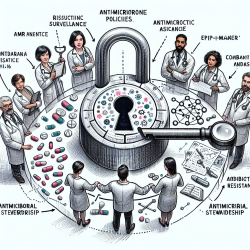In the dynamic field of speech-language pathology, practitioners constantly seek methods to improve their skills and deliver the best outcomes for children. A recent systematic review titled "Evidence-informed practice versus evidence-based practice educational interventions for improving knowledge, attitudes, understanding, and behavior toward the application of evidence into practice: A comprehensive systematic review of UG student" provides critical insights into how these two educational approaches impact the application of evidence in practice.
Understanding the Review
The review, conducted by Kumah et al. (2022), sought to evaluate the relative effectiveness of evidence-informed practice (EIP) and evidence-based practice (EBP) educational interventions. The primary aim was to improve undergraduate health and social care students' knowledge, attitudes, understanding, and behavior towards applying evidence into practice. Despite the thorough search and analysis, the review concluded that no eligible studies directly compared EIP and EBP interventions.
Key Findings and Implications
While the review found no studies that met the criteria for inclusion, several important points emerged:
- Gap in Research: There is a significant gap in research comparing the effectiveness of EIP and EBP educational interventions. This calls for new primary studies to explore these areas rigorously.
- Need for Innovative Educational Interventions: Both EIP and EBP offer valuable frameworks for integrating evidence into practice. EIP is characterized by its flexibility and inclusivity, considering various forms of evidence and the clinical context. EBP follows a more structured, step-wise approach.
- Practical Application: Practitioners should remain open to both approaches, integrating the best available evidence with clinical expertise and patient preferences to achieve optimal outcomes.
Practical Steps for Practitioners
For speech-language pathologists and other healthcare professionals looking to enhance their practice, the following steps can be instrumental:
- Stay Informed: Regularly review current literature and research in both EIP and EBP. This ensures that you are aware of the latest findings and methodologies.
- Engage in Continuous Learning: Participate in workshops, seminars, and courses that focus on both EIP and EBP. This will help in understanding the nuances and applications of each approach.
- Apply Integrated Approaches: Use a blend of EIP and EBP in clinical decision-making. This integrated approach can provide a more holistic view and improve patient outcomes.
- Collaborate and Share Knowledge: Engage with peers and experts in the field to share insights and experiences. Collaboration can lead to innovative solutions and better implementation of evidence into practice.
Encouraging Further Research
The review highlights an urgent need for primary studies evaluating the relative effectiveness of EIP and EBP educational interventions. Researchers are encouraged to design studies that reflect the differences and similarities between these two concepts, enabling a clearer understanding of their impact on healthcare practice.
Conclusion
In the quest to improve outcomes for children, speech-language pathologists must leverage both evidence-informed and evidence-based practices. By staying informed, engaging in continuous learning, and applying integrated approaches, practitioners can bridge the gap between evidence and practice, ensuring that children receive the best possible care.
To read the original research paper, please follow this link: Evidence-informed practice versus evidence-based practice educational interventions for improving knowledge, attitudes, understanding, and behavior toward the application of evidence into practice: A comprehensive systematic review of UG student.










